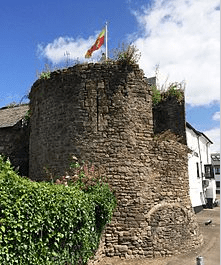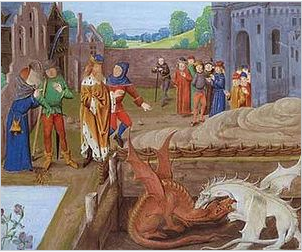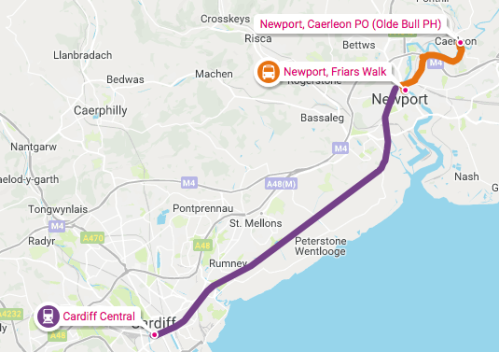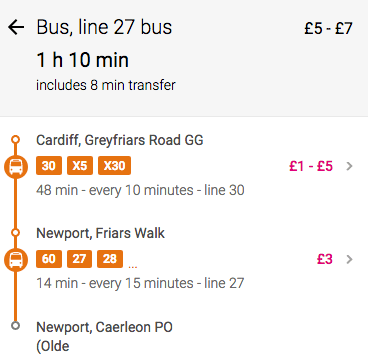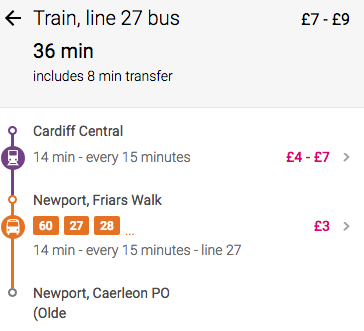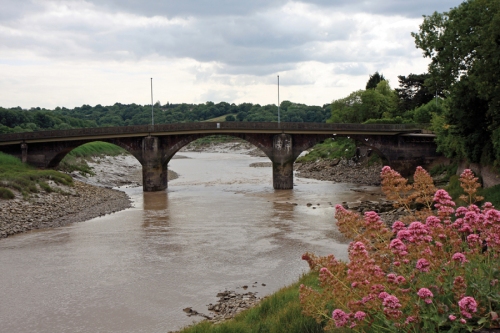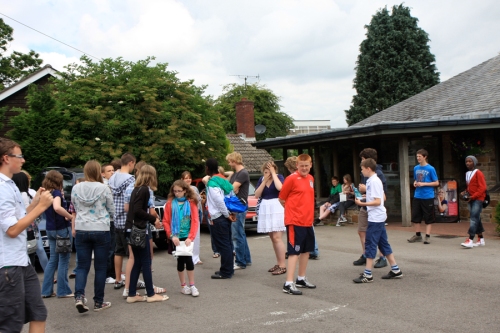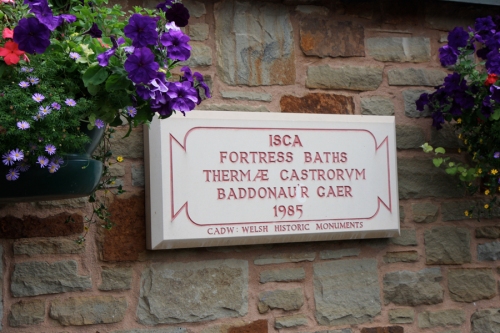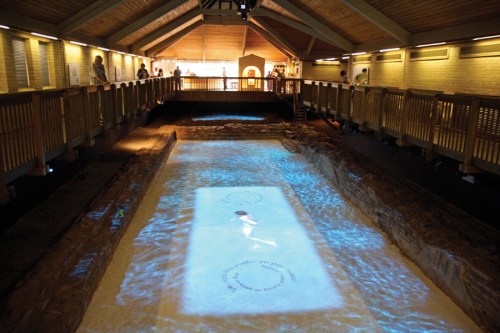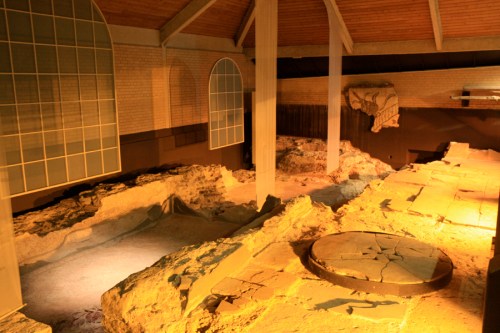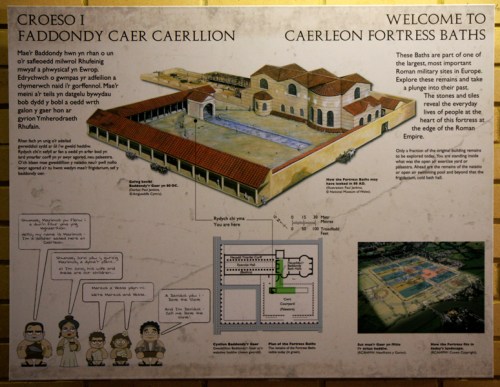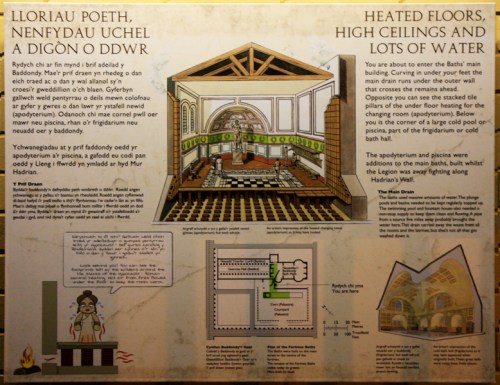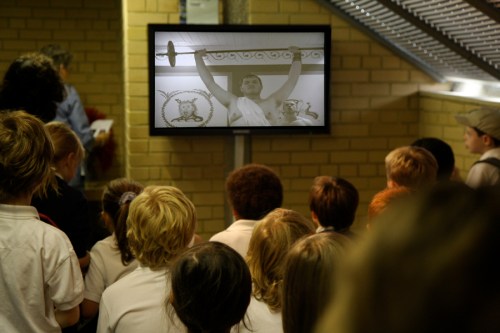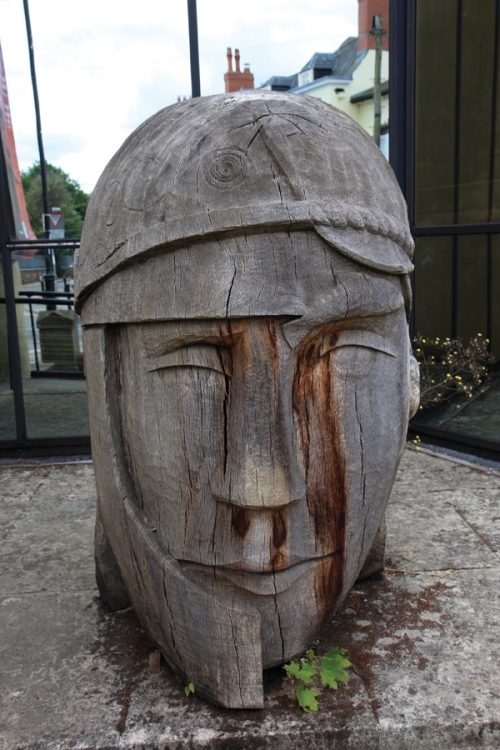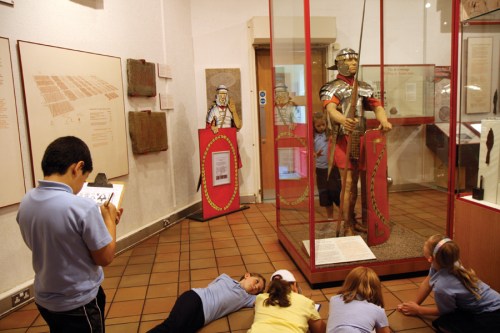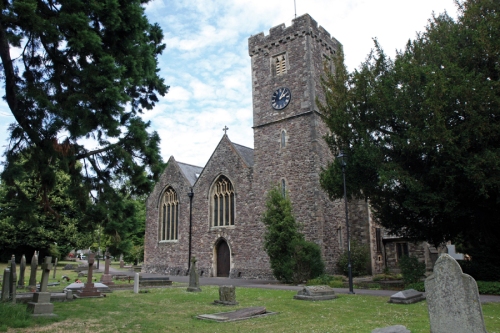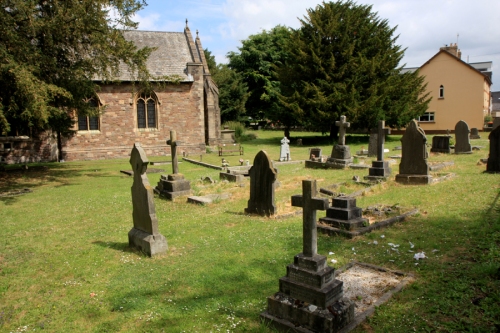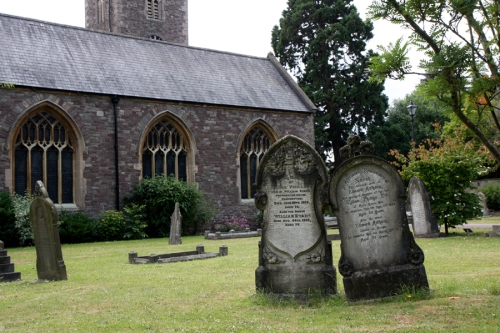
Últimas imagens de Caerleon: marcos indicando coisas que não existem mais / Last Caerleon pics: signs pointing out things that are no more
No dia seguinte, voltaria à Inglaterra. Alguns amigos que moravam em Oxford tinham me convidado a pernoitar na casa deles, portanto eu iria.
The next day I’d be on my way back to England. A couple friend was living in Oxford and had invited me to stay the night with them, so I would not decline the offer.
O trem saía no meio da tarde, tive tempo de fazer um tour pela cidade pela manhã. Era época de liquidação nas lojas de Cardiff. Quis aproveitar e comprei umas roupinhas e acessórios para minha filha toda animada… nem me passou pela cabeça que aquilo não cabia na mochila! Antes de pegar o trem, fui ao correio e despachei tudo numa caixa para o Brasil, juntamente com o dragãozinho vermelho de pelúcia. Distraída, esqueci a bolsa da loja, onde tinha trazido as roupas, no chão ao lado do balcão do Correio. Que susto! A funcionária veio atrás de mim aos gritos. Me deu a maior bronca, gesticulando muito e, por fim, entendi o porquê: medo de bombas e terrorismo. Britânicos – aliás, americanos também – tem paranóia com bolsas e objetos abandonados, ainda que seja uma bolsa de papel vazia.

Antes de deixar Caerleon, parei aqui para uma refeição, no local onde ficava a Porta Praetoria – portão principal do forte romano / Before leaving Caerleon I stopped here to eat something. This place stands where was located the ancient Porta Praetoria, main gate to the Roman military city
The train would leave in the afternoon, so I had time to make a sightseeing tour in the morning. Most shops in Cardiff were on sales, so I decided to take advantage of that and buy clothes and stuff for my daughter. I was so happy that I didn’t realize that all that stuff would never fit in my backpack! So, on my way to the train station I stopped by the post office and dispatched it all in a box to Brazil, including the stuffed red dragon. My head was elsewhere and I forgot the shopping bag, on the floor by the Post Office desk. What a shock! The clerk came after me, scolding and screaming, and it took me a while to understand why: the British are very much afraid of bombs and terrorism. Actually , americans too – they have this paranoia with objects left behind, even an empty paper bag.
Cheguei a Oxford em plena Copa do Mundo, dez minutos após o início do jogo do Brasil contra a Holanda. Desci do trem com a camisa da seleção brasileira por cima da roupa e estava esperando para atravessar a rua quando um taxista indiano parou o carro na minha frente, disse que o Brasil estava ganhando de 1 x 0 e me indicou um pub onde estariam assistindo o jogo. Agradeci e corri para lá, pois só iria encontrar meus amigos à noite. As apostas estavam todas no time do Brasil. Entretanto, no pub presenciei o mico do ano: o time brasileiro foi derrotado vergonhosamente e voltou para casa no dia seguinte!
I arrived in Oxford in the World Cup season, ten minutes after the game Brazil x Netherland had started. I had got off the train wearing the yellow Brazilian team shirt over my clothes and was waiting to cross the street when a taxi stopped by me. The driver, an Indian, told me that Brazil was winning 1 x 0 and showed me a pub where I could watch the game. As I was supposed to meet my friends only by night, I thanked him and ran to the pub. Bets in Brazil were high! However, my country suffered a terrible humiliation, losing by 3 x 1 and flying back home the next day.

O cavalo de Uffington à distância. Acabei chegando lá, continue lendo… /The Uffington Horse from the distance. I eventually got there. Keep reading.
Eu também estaria voltando logo. Mas iria ainda visitar outras famosas figuras de giz carvadas nas colinas inglesas: o cavalo branco de Uffington (o mais antigo dos quatro que existem no Reino Unido) e o Gigante de Cerne Abbas. Eu já tinha visitado o Long Man de Wilmington (ver post 106).
I should be leaving soon too. But before that I was going to see other famous English chalk figures: the White Horse of Uffington (the oldest of the four chalk horses in the UK) and the Cerne Abbas Giant. I had already visited the Long Man of Wilmington (see post 106).
À noite, meus amigos Eduardo & Dani me ajudaram a traçar o itinerário para Uffington. Na manhã seguinte, me deixaram num ponto de ônibus onde embarquei para um lugar chamado Farington, obviamente um fim de mundo. Dali saía diariamente um ônibus para Uffington… menos naquele dia. E nem era domingo, ainda era sábado! Respirei fundo. Tinha um problema para resolver.

Fiquei ali muito tempo esperando alguma solução / I’ve been stuck there a longtime, waiting for a solution
By night, my friends Eduardo & Dani helped me to plot the trip to Uffington. Next morning, they left me in a bus stop where I’ve boarded the bus to somewhere called Farington, obviously by the end of the world. From there a bus was supposed to go daily to Uffington… except that very day. And it was not even Sunday, it was a Saturday! I took a deep breath. I had a problem.







